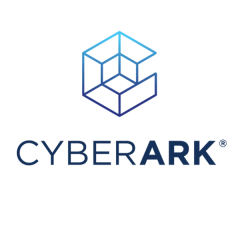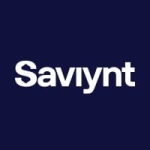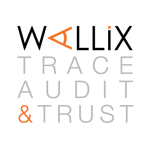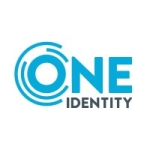What is our primary use case?
We use CyberArk Privileged Access Manager to provide a protective layer for our infrastructure, as well as for our customers.
Additionally, the audit functionality that it provides is used as protection for our employees. It offers evidence, so if there's any question about wrongdoing, there's proof that the job was done correctly.
How has it helped my organization?
It's predominantly addressing challenges around reducing open access to critical infrastructure and providing a mechanism to control who can get to what and with what credentials.
It's improved the organization by making it easier to access privileged accounts. There are so many accounts needed by most people now and to have a a tool that can not only store those credentials for you, but manage them and give you easy access to them, has made life a lot easier. The removal of the need to manage and maintain those credentials and cycling passwords regularly is a pain for anybody. The tool manages all of that for you whilst giving you a simple means to use them.
What is most valuable?
The most beneficial feature in CyberArk Privileged Access Manager is its simple user interface. It is definitely advantageous. I also appreciate the enhancements that come along with the continual updates that are provided.
It has improved the organization by making it simpler to gain access to privileged credentials. There are so many accounts needed by most people now, and having a tool that can not only store those credentials for you but also manage them and give you easy access has made life a lot easier. The tool manages credential cycling, which is typically a pain for anybody, while providing a simple means to use them.
The solution is very good for protecting full levels of data privacy. We silo out different parts of the solution for access to to different types of infrastructure in the same way we would to our customers so that we can restrict who can get to something. In combination with our IM processes, we can be quite granular about who has access to what.
We can stay updated on regulations. The updates that are coming through help to keep the product secure and also add in updates and enhancements that give greater functionality and keep it relevant in terms of requirements.
The controls are fairly granular. We can control who can administrate it and who can use it and what they can use when they're using it. It has positively impacted visibility. As we leverage the product for administration of the product, we're able to be much more granular in how we provide the access. The audit controls allow us to see who is doing what, and when, it should be required.
It safeguards credentials. This is very important. The ability to have the product manage and maintain credentials and only provide them to authorized individuals, whilst not actually allowing them to retrieve those credentials, has become more paramount as we look to increase the security based on sort of ongoing real-world threats.
It's helping with compliance, specifically around securing and hardening of infrastructure. It allows us to harden while still maintaining usability.
In terms of operational efficiency, it depends on where you're coming from. Some things are more efficient, some things are a little less efficient yet more secure. It's that ongoing balancing act between operation efficiency and security that we must deal with.
We've been able to reduce the number of privileged accounts in the organization with the ability to have shared accounts. Since the credentials are not specific to a user and they're made available to a user for the duration of their session, we can reduce the number of privileged accounts we have within the organization. We've reduced the accounts by a half to a third between ourselves and our customers.
What needs improvement?
I would like to see an easier way to define delegated roles within the administration of the core product. There is granularity within the tool, however, it is not simple to define those specific delegated roles.
For how long have I used the solution?
I have used the solution for about nine years; it's been quite a while.
What do I think about the stability of the solution?
We have had some performance and stability issues. We have had instances where things weren't as they should be, however, we worked closely with the development support teams once the issues were escalated and managed to find either a resolution or a workaround to stabilize the solution. Typically, it is fairly stable.
What do I think about the scalability of the solution?
Initially, we found some issues with scalability, however, over time, the guidelines and recommendations from the vendor have changed. By working closely with the available guidelines, the scalability is absolutely fine.
How are customer service and support?
The customer service is generally quite good, although if it's more complicated, you have to wait for it to be passed back to their dev support, which can take more time. For simpler issues, the turnaround is relatively quick. If more complicated, it can take longer to get the right level of support.
However, the support they provide is usually good, particularly their dev guys, who certainly know what they're talking about.
How would you rate customer service and support?
Which solution did I use previously and why did I switch?
Before CyberArk Privileged Access Manager, we didn't have a PAM product itself. We were using Citrix to provide remote access, but the need to move into the PAM space arose to provide extra security and audit control.
Although I wasn't involved with the process, there was a competition to define which product would be used, and the CyberArk Privileged Access Manager product came out on top.
How was the initial setup?
The initial setup is relatively straightforward once you've done it. It is certainly a lot easier to repeat. We have multiple instances of the on-prem deployed, so we've done it a few times now.
What about the implementation team?
The deployment involved approximately four or five people, based on role separation. In a smaller organization, it could likely be done with one or two people. However, due to the need to separate functions for design, implementation of the service, product implementation, network and firewall requirements, and IAM processes for all accounts, several people are required to ensure these functions are covered.
What was our ROI?
From a security perspective, we started seeing value right away because we didn't have a PAM solution at the time. Over the next sort of months and years, we settled into the product and started to look at how we could make it work for us. This has been an ongoing process over the years, particularly with product enhancements and new features, which provide additional benefits against the incurred costs.
What's my experience with pricing, setup cost, and licensing?
I'm not involved in the pricing.
Which other solutions did I evaluate?
About a year ago, we started looking at potential alternatives. There were two others that were considered and were ruled out for various reasons before looking at additional proof of concepts to see what other features could be leveraged from CyberArk Privileged Access Manager that we weren't using. It managed to pass all of the requirements.
What other advice do I have?
We have customers for various industries and use the product internally ourselves. We are in the IT sector and provide services to organizations in a variety of sectors.
It's definitely worth looking at as a PAM tool. I would steer towards the SaaS version since everything suggests that it is potentially a better way to go than on-prem. However, on-prem would still be suitable for those who must control and own their data.
It's still worthwhile implementing, and overall, I'd probably give it an eight out of ten.
Which deployment model are you using for this solution?
On-premises
Disclosure: PeerSpot contacted the reviewer to collect the review and to validate authenticity. The reviewer was referred by the vendor, but the review is not subject to editing or approval by the vendor.



















